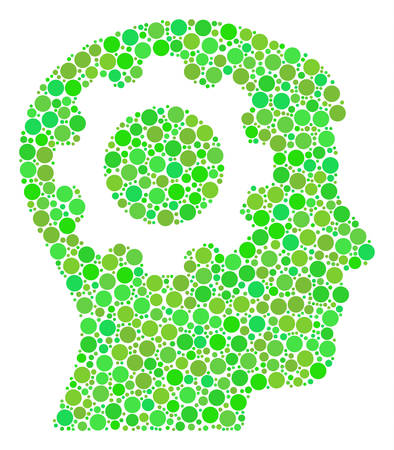Introduction to Spinal Cord Injury Rehabilitation in the UK
Spinal cord injury (SCI) presents a significant challenge for both individuals and the healthcare system across the United Kingdom. Each year, hundreds of people experience life-changing consequences due to SCI, affecting mobility, independence, and overall well-being. In the UK, rehabilitation is an essential component of SCI management, aimed at maximising function, enhancing quality of life, and supporting individuals as they adapt to new realities. However, common challenges such as limited access to specialised services, varying standards of care across regions, and long waiting times can impact patients’ recovery journeys. The NHS and other providers strive to offer comprehensive support through multidisciplinary teams, yet resource constraints often pose barriers to optimal outcomes. Against this backdrop, the landscape of SCI rehabilitation in the UK is rapidly evolving, with new technologies and innovative approaches emerging to address these longstanding issues and improve patient-centred care.
2. The Role of Multidisciplinary Teams in Patient-Centred Care
In the United Kingdom, spinal cord injury (SCI) rehabilitation has evolved to place significant emphasis on multidisciplinary teams (MDTs), ensuring that patients receive comprehensive, patient-centred care. This approach recognises that SCI affects every aspect of a persons life, from physical health to psychological wellbeing and social participation. By bringing together specialists from diverse backgrounds, MDTs collaborate to design and deliver holistic rehabilitation plans tailored to each individuals unique needs and goals.
Collaborative Approaches in SCI Rehabilitation
Effective SCI rehabilitation relies on input from various healthcare professionals, including but not limited to:
| Specialist | Role in Rehabilitation |
|---|---|
| Consultant in Spinal Injuries | Oversees medical management and coordinates overall care plan |
| Physiotherapist | Focuses on mobility, strength, and functional independence |
| Occupational Therapist | Assists with daily living activities and adaptive techniques |
| Clinical Psychologist | Supports mental health, coping strategies, and emotional adjustment |
| Nurse Specialist | Provides ongoing clinical care and patient education |
| Speech & Language Therapist | Addresses communication or swallowing difficulties if present |
| Social Worker/Case Manager | Facilitates community reintegration and access to resources |
| Rehabilitation Engineer/Technologist | Implements emerging technologies such as assistive devices and digital platforms |
The UK Approach: Personalised and Holistic Care Plans
The hallmark of UK-based SCI rehabilitation lies in its commitment to patient-centred care. Each individual is actively involved in decision-making about their rehabilitation goals and interventions. MDT meetings are held regularly, allowing team members to discuss progress, update care plans, and ensure that new innovations—such as robotics, virtual reality therapy, or smart home adaptations—are integrated where beneficial. This collaborative environment fosters innovation by encouraging professionals to share insights on emerging technologies that can enhance recovery outcomes.
Benefits of the Multidisciplinary Model for SCI Patients in the UK:
- Personalisation: Tailored interventions based on each patients lifestyle, preferences, and aspirations.
- Continuity of Care: Seamless communication among team members ensures coordinated support throughout the rehabilitation journey.
- Holistic Support: Physical, psychological, social, and technological needs are addressed comprehensively.
- Enhanced Innovation: Ongoing professional collaboration accelerates the adoption of novel rehabilitation technologies.
- Improved Outcomes: Evidence suggests MDT-led care results in better functional independence and quality of life for SCI patients.
This multidisciplinary approach remains central to driving forward innovations in SCI rehabilitation across the UK, ensuring that emerging technologies are implemented thoughtfully within a framework that prioritises patient wellbeing at every stage.

3. Cutting-Edge Technologies Transforming Rehabilitation
The landscape of spinal cord injury (SCI) rehabilitation in the UK is being dramatically reshaped by a wave of innovative technologies. Among the most promising advancements are exoskeletons, robotics, virtual reality (VR), and neuromodulation. These cutting-edge tools are not only enhancing the recovery process but also offering new hope and improved quality of life for individuals living with SCI.
Exoskeletons: Enabling New Possibilities
Exoskeletons, wearable robotic suits designed to assist movement, are increasingly being integrated into specialist rehabilitation centres across the UK. These devices support patients in standing, walking, and performing repetitive gait training, which is essential for muscle strength and neural recovery. Many NHS trusts and private clinics now offer exoskeleton-assisted therapy as part of their comprehensive rehabilitation programmes, with positive outcomes reported in terms of mobility, cardiovascular health, and patient morale.
Robotics: Precision and Personalisation
Robotic-assisted rehabilitation devices are revolutionising traditional physiotherapy. From upper limb robots that enhance arm and hand function to lower limb devices that facilitate walking practice, these systems provide precise, data-driven feedback tailored to each patient’s needs. UK-based research collaborations between universities, hospitals, and industry partners continue to refine these technologies, ensuring they are accessible and effective within NHS settings.
Virtual Reality: Immersive Rehabilitation Experiences
Virtual reality is making its mark in SCI rehabilitation by creating immersive environments that motivate patients to engage in repetitive exercises critical for neuroplasticity. UK clinics are increasingly adopting VR platforms for both physical and cognitive therapies. These interactive experiences not only make rehabilitation more enjoyable but also track progress in real-time, enabling therapists to personalise interventions based on robust clinical data.
Neuromodulation: Harnessing the Power of the Nervous System
Neuromodulation techniques such as transcutaneous electrical nerve stimulation (TENS) and epidural electrical stimulation are gaining traction in UK clinical practice. These therapies aim to stimulate neural pathways below the level of injury, promoting voluntary movement and functional gains previously thought unattainable. Ongoing trials at leading UK neuroscience centres are demonstrating encouraging results, paving the way for broader implementation in routine care.
Integration into Clinical Practice
The integration of these advanced technologies into everyday clinical practice reflects the UK’s commitment to evidence-based innovation. Multidisciplinary teams comprising physiotherapists, occupational therapists, engineers, and clinicians collaborate closely to ensure seamless adoption and optimal outcomes for patients. As these technologies continue to evolve, they hold tremendous potential to transform lives—offering individuals with spinal cord injuries greater independence and a brighter future.
4. Digital Health and Remote Monitoring Innovations
The landscape of spinal cord injury (SCI) rehabilitation in the UK is being reshaped by digital health solutions and remote monitoring technologies. These advancements not only enhance the continuity of care but also empower patients to take greater control over their recovery and daily lives. Telehealth, wearable devices, and digital platforms are at the forefront, bridging gaps between patients and multidisciplinary teams regardless of geographical barriers.
Telehealth: Bridging Distances for Personalised Care
Telehealth services have become a vital component in SCI rehabilitation, allowing individuals to consult with physiotherapists, occupational therapists, psychologists, and consultants from the comfort of their own homes. This is particularly valuable for those living in rural or remote regions where specialist centres may be far away. Video consultations facilitate regular follow-up appointments, medication reviews, and tailored exercise guidance without the need for travel. Additionally, telehealth platforms ensure that urgent concerns can be addressed promptly, reducing anxiety and unnecessary hospital visits.
Wearable Devices: Real-Time Monitoring and Feedback
Wearable technology is revolutionising how clinicians monitor progress and manage potential complications in SCI patients. Devices such as smartwatches, pressure sensors, and fitness trackers gather real-time data on mobility, posture, heart rate, and even skin integrity—critical in preventing pressure ulcers. These insights allow healthcare professionals to adjust rehabilitation plans proactively while providing patients with instant feedback to support self-management.
Key Features of Wearable Devices in SCI Rehabilitation
| Device Type | Monitored Parameter | Benefit to Patient |
|---|---|---|
| Smartwatches & Fitness Bands | Activity levels, heart rate | Encourages mobility and cardiovascular health |
| Pressure Sensors | Sitting/lying posture & pressure points | Reduces risk of pressure sores through timely alerts |
| Movement Trackers | Range of motion & movement patterns | Personalised exercise adjustments and motivation |
Digital Platforms: Supporting Independence and Community Connection
A range of digital platforms are now available in the UK to help SCI patients manage appointments, access educational materials, track progress, and communicate with care teams. Mobile apps can send reminders for medication or turning schedules, while online forums connect users with peer support groups—crucial for psychological wellbeing and shared learning. These platforms encourage greater autonomy in daily routines and foster a sense of community among individuals facing similar challenges.
The Future of Digital Health in UK SCI Rehabilitation
The integration of telehealth, wearables, and digital platforms is transforming rehabilitation into a more patient-centred experience. By promoting seamless communication between healthcare providers and individuals living with SCI, these innovations help maintain continuity of care beyond hospital settings—empowering patients to lead fuller, more independent lives across the UK.
5. Accessibility and Equality in Rehabilitation Services
Ensuring equitable access to innovative spinal cord injury rehabilitation technologies remains a central focus across the UK. While cutting-edge advancements such as robotic exoskeletons, virtual reality therapies, and tele-rehabilitation platforms hold immense potential, disparities in accessibility can arise due to regional, socioeconomic, and demographic differences. Many individuals living in rural or remote areas may face challenges in reaching specialist centres where these technologies are available, while others might encounter barriers related to cost, digital literacy, or cultural factors.
To address these challenges, the NHS and various charitable organisations are working collaboratively to expand outreach and adapt services for broader inclusivity. Initiatives such as mobile rehabilitation units and community-based partnerships help bridge geographical gaps, bringing state-of-the-art care directly to those who need it most. Funding schemes and government-backed subsidies are being explored to reduce financial obstacles for patients from lower-income backgrounds, ensuring that innovation does not become a privilege for only a select few.
Furthermore, training healthcare professionals in culturally competent care and digital skills is paramount to supporting diverse populations. By fostering awareness around the unique needs of different communities—be it language support, accessible transport options, or tailored educational resources—the UK’s rehabilitation landscape continues to evolve towards greater equality. Ultimately, these concerted efforts aim to ensure that every individual with a spinal cord injury has the opportunity to benefit from the very latest in rehabilitation technology, regardless of their background or location.
6. Patient Stories and Lived Experiences
One of the most compelling ways to appreciate the impact of emerging technologies in spinal cord injury rehabilitation is by listening to those who experience them first-hand. Across the UK, individuals living with spinal cord injuries are sharing their journeys, offering valuable insights into how innovations are transforming their daily lives and long-term recovery.
Empowering Independence Through Technology
Take, for example, Sarah from Manchester, who sustained a spinal cord injury following a cycling accident. She credits her regained independence to the introduction of advanced robotic exoskeletons at her local NHS rehabilitation centre. “Using the exoskeleton was daunting at first, but it gave me hope that I could walk again, even if just for a short distance. It’s changed my outlook entirely,” she shares. Devices like these not only aid mobility but also restore confidence, allowing users to engage more fully in community life.
Personalised Rehabilitation Journeys
For James in Bristol, virtual reality-based therapy has been a game-changer. “The VR sessions made my rehab engaging and fun—something I never expected. It distracted me from pain and pushed me to try harder each session.” By tailoring therapy experiences to individual needs and preferences, these technological advances ensure that patients remain motivated and actively involved in their recovery.
Bridging Distances with Tele-rehabilitation
During the pandemic, remote support became vital. Claire, living in rural Scotland, benefited greatly from tele-rehabilitation services: “Without the video consultations and digital exercise programmes, I would have felt completely isolated. The technology kept me connected to my physiotherapists and peers.” This shift demonstrates how digital innovation can bridge geographical gaps and provide continuous care across the UK’s diverse regions.
Building a Supportive Community
The real-world impact of these technologies extends beyond physical improvements. Many patients highlight how online forums, social media groups, and NHS-supported digital platforms have fostered a sense of community and mutual encouragement. As Oliver from London explains, “Being able to share experiences and progress with others facing similar challenges has been invaluable—it helps you realise you’re not alone on this journey.”
Together, these lived experiences underscore the profound effect that emerging technologies have on the lives of people with spinal cord injuries throughout the UK. Their stories not only inspire hope but also drive further innovation, ensuring that patient voices remain at the heart of progress in rehabilitation care.
7. Future Perspectives and Ongoing Research in the UK
The landscape of spinal cord injury (SCI) rehabilitation in the UK is rapidly evolving, with ongoing research and innovative therapies shaping a more hopeful future for patients. The UK’s healthcare system, supported by both the NHS and leading academic institutions, is at the forefront of investigating new approaches to SCI recovery. Current studies are exploring advanced neuroprosthetics, stem cell therapies, and brain-computer interfaces, with several clinical trials underway across major UK centres. These initiatives are not only focused on improving mobility but also addressing chronic pain management, bladder and bowel function, and psychosocial wellbeing.
Looking ahead, there is great anticipation surrounding personalised rehabilitation programmes that leverage artificial intelligence and data analytics to tailor interventions for individual needs. Researchers are also examining the role of virtual reality and immersive digital environments to enhance motivation and engagement during therapy. Importantly, collaboration between clinicians, scientists, engineers, and patient advocacy groups remains central to ensuring that emerging treatments are both effective and accessible within the unique structure of the UK healthcare system.
As these innovations move from laboratory to clinic, continuous investment in research infrastructure and patient-centred care models will be crucial. The commitment to ongoing education for both healthcare professionals and patients will help ensure that the benefits of technological advances reach those who need them most. With a strong foundation in multidisciplinary collaboration and a focus on holistic outcomes, the future of SCI rehabilitation in the UK holds significant promise for transforming lives.

